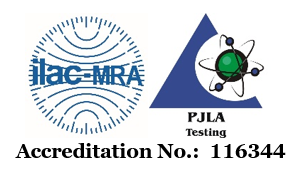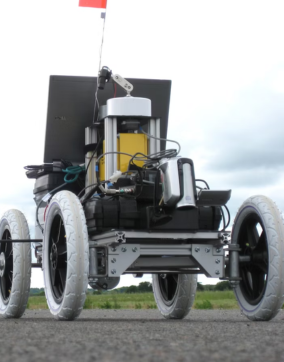TRACKS
The pavement surfaces at test tracks, proving grounds, and motorsports facilities are a valuable and important asset. Ensuring success on a fixed budget leaves no room for error—the project must be done right the first time.


We provide acceptance testing of new test tracks and periodic checking of existing tracks at intervals required by the relevant standards. We provide ISO/IEC 17025:2017 accredited conformity testing to the current ISO 10844:2021 standard and prior ISO 10844:2014, ISO 10844:2011, and ISO 10844:1994 versions of the standard. We also provide accredited test services for certifying Wet Traction Lanes and Wet Braking Lanes in accordance with UN ECE Regulation 117 (UNECE R117). Finally, we provide accredited measurements to certify track conformance to a myriad of regulations and tests standards including those for braking, ADAS, and coastdown (fuel economy).
Many surfaces require surface texture measurements including those certified to ISO 10844 and UN ECE R117. Our most frequently used surface profiler called RoboTex adheres to Class DE of ISO 13473-3, characterization of pavement texture by use of surface profiles. RoboTex is a laser-based texture profiling device that scans along the entire length of the track. We provide specialized measurements of microtexture using a high resolution laser-based system. And finally, accredited texture measurements using “sand patch” in accordance with ISO 10844:1994 Appendix A, EN 13036-1, and ASTM E965.
Most tracks including automotive test tracks and motorsports tracks should be smooth! Our testing services and ISO/IEC 17025:2017 includes accreditation for testing evenness. We provide straightedge testing in accordance with EN 13036-7. We also use both inclinometer and laser-based profilers according to ASTM E950, EN 13036-5. These results can be used for calculating International Roughness Index (IRI) or also megatexture according to ISO 13473-5 and EN 13036-6.
ISO 10844 testing requires an impedance tube device meeting ISO 13472-2, measurement of sound absorption properties of road surfaces in situ. We use a two-microphone method for acoustical absorption. The measurement is conducted in-situ, without the need for extracting core samples and the associated patching repairs.
We utilize state-of-the-art testing equipment and industry-proven methodologies to comprehensively evaluate and enhance track surfaces for compliance with SAE, UNECE, EPA, NHTSA and national and other international standards. Our rigorous assessments ensure surfaces meet or exceed stringent requirements for safety, consistency, and performance across multiple regulatory frameworks.
The tests we offer cover everything from braking systems to noise levels, and each requires specific surface conditions to yield accurate results.
Society of Automotive Engineers (SAE) tests are widely recognized in the automotive industry. These tests cover a broad range of vehicle characteristics, including:
SAE tests often require precise surface conditions, such as specific grades, pavement friction coefficients, and surface uniformity.
We offer testing to certify test surfaces for:
Economic Commission for Europe (ECE) regulations are internationally recognized standards for vehicle safety and environmental protection.
ECE tests include:
Many ECE tests specify the use of ISO 10844 surfaces, which have strict requirements for texture, sound absorption, and flatness.
We offer testing to certify test surfaces for:
Environmental Protection Agency (EPA) tests are crucial for evaluating vehicle emissions, fuel economy, and performance under various conditions. These tests are designed to ensure compliance with environmental regulations and assess the overall environmental impact of vehicles.
Key aspects of EPA tests include:
We offer testing to certify test surfaces for:
European New Car Assessment Programme (Euro NCAP) tests focus on vehicle safety ratings. Key test categories include:
These tests demand consistent surface conditions with specific friction coefficients and minimal irregularities to ensure accurate sensor readings.
We offer testing to certify test surfaces for:
Green NCAP evaluates the environmental impact of vehicles. Their tests include:
Green NCAP tests require precise road conditions to accurately measure vehicle performance and emissions.
We offer testing to certify test surfaces for:
Federal Motor Vehicle Safety Standards (FMVSS) are U.S. regulations that specify performance requirements for motor vehicles. FMVSS tests cover:
These tests often require specific surface characteristics, including grade, friction, and uniformity.
We offer testing to certify test surfaces for:
As the ECE and other regulations worldwide continue to evolve, the ISO 10844:2011 exterior noise test track standard will be an important component of vehicle and tire noise testing in the coming years. Tracks that had previously complied with the 1994 version of the standard are not necessarily conforming to the new standard, which has led to many owners to seek out resurfacing projects.
This document outlines the key technical changes and benefits of ISO 10844:2021, which introduces updated measurement methods and specifications for test tracks used in vehicle noise testing.
CONTACT US

The Transtec Group engineers the best pavements in the world. Have a pavement problem? Give us a call—we’re good listeners.
© 2025 | The Transtec Group, Inc. | Privacy Policy